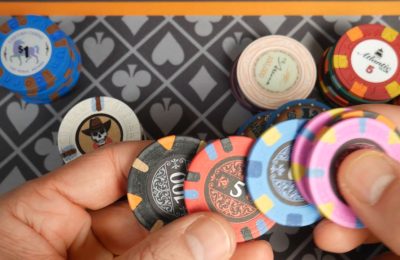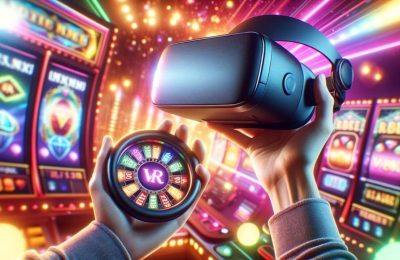Imagine stepping into a casino. You hear the distant clatter of chips, the hypnotic whirl of a roulette wheel, and the soft murmur of other players. You walk up to a blackjack table, nod to the dealer, and pick up your cards to examine them. You can almost feel the texture. This isn’t a dream, and it’s not a plane ticket to Vegas. This is the new frontier of online gambling: the virtual reality casino.
It’s a leap from clicking a mouse to actually inhabiting a space. Honestly, it changes everything. But to make that leap, you need the right gear. Let’s break down what this immersive world is really like and, more importantly, what it takes to get in the game.
What Does a VR Casino Actually Feel Like?
If you’re picturing a basic online casino with a VR headset strapped on, think bigger. The experience is designed to be deeply social and spatial. You’re not just playing a game; you’re visiting a place.
The Social Spark
This is the killer feature. In many VR casino platforms, your avatar can sit next to other players. You can chat using voice, gesture with your controllers—a simple wave, a thumbs-up, even a frustrated head shake after a bad beat. It recreates the camaraderie and subtle human interactions you’d find in a physical casino. It’s the difference between playing a solo video game and being at a party.
Game Realism on Another Level
Slots become towering, colorful machines you physically pull the lever on. In poker, you can pick up your cards, shield them with your hands, and look other players in the eye—or at least, their avatar’s eyes. Craps and roulette see you standing around the table with a group, watching the dice bounce and the ball clatter into its slot. The sensory detail is what sells the illusion.
The Hardware: Your Ticket to the Virtual Tables
Here’s the deal: you can’t just download an app and go. VR demands more from your tech. It’s not just about the headset; it’s about the whole system powering it.
The Brains: Your Gaming PC
For a high-fidelity, seamless experience, a powerful gaming PC is non-negotiable. Stuttery graphics or laggy tracking will instantly shatter the immersion and, frankly, ruin the fun. Here’s a rough breakdown of what you’re looking at:
| Component | Minimum Recommendation | Ideal (Future-Proof) Spec |
| GPU (Graphics Card) | NVIDIA GTX 1060 / AMD Radeon RX 580 | NVIDIA RTX 3060 or better |
| CPU (Processor) | Intel i5-4590 / AMD Ryzen 5 1500X | Intel i7 / AMD Ryzen 7 series |
| RAM (Memory) | 8 GB | 16 GB |
| Ports | Compatible USB ports (often 3.0) & DisplayPort | |
See, the GPU is the real workhorse here. It’s rendering two high-resolution screens (one for each eye) at a very high frame rate. Skimp here, and you’ll pay for it in pixelated visuals and maybe even motion sickness.
The Portal: VR Headsets
The headset is your window. The market has a few solid contenders, each with its own pros and cons.
- Meta Quest 2 & 3 (Standalone/PC-Hybrid): Honestly, these are the gateway drugs for most people. They can run simpler experiences on their own, but for the best VR casino graphics, you’d connect them to a gaming PC. The Quest 3’s color passthrough even opens doors for mixed reality blackjack on your actual coffee table.
- Valve Index: The high-end enthusiast’s choice. Known for its superb controllers, wide field of view, and buttery-smooth refresh rates. It delivers a top-tier experience but requires that beefy PC and a bigger budget.
- HP Reverb G2: Often praised for its incredibly sharp displays, making text on cards and chips easy to read. A great option if visual clarity is your top priority.
Don’t Forget the Space
You don’t need a warehouse, but you do need a clear area. Most VR systems require room for you to stand, turn around, and swing your arms without punching a wall or a lamp. We call this “room-scale” VR, and it’s what lets you walk up to that virtual slot machine. A cleared-out space of 6.5 x 5 feet is a good, safe starting point.
Standalone VR: Is It a Viable Option?
Sure, devices like the Meta Quest series are amazing all-in-one units. For VR casinos, they’re… getting there. The convenience is undeniable—no wires, no PC. But the trade-off is graphical fidelity. The experience will be less detailed, a bit more cartoonish perhaps, compared to what a wired headset powered by a monster GPU can produce. It’s a fantastic way to dip your toes in the water, though.
The Future is Loading
We’re still in the early adopter phase. The library of dedicated VR casino apps is growing but isn’t massive. You’ll find pioneers like PokerStars VR leading the charge, offering a truly breathtaking social poker experience for free. The key pain point right now is accessibility—the hardware barrier is real.
But as the tech becomes more affordable and widespread, we’ll see more developers jump in. Imagine live dealer games in VR, where the real human dealer is streamed in as a hologram. Or themed casinos you can’t visit anywhere else—a high-stakes poker room on a space station, anyone?
So, the virtual chips are glimmering, the digital decks are shuffled. The question isn’t really if you’ll ever visit a VR casino. It’s about when your setup will be ready for you to take that first, step inside.















